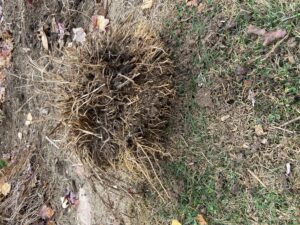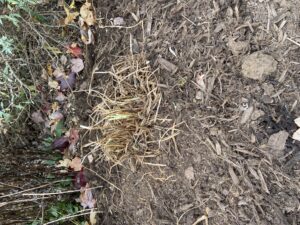Dividing Plants
go.ncsu.edu/readext?966818
en Español / em Português
El inglés es el idioma de control de esta página. En la medida en que haya algún conflicto entre la traducción al inglés y la traducción, el inglés prevalece.
Al hacer clic en el enlace de traducción se activa un servicio de traducción gratuito para convertir la página al español. Al igual que con cualquier traducción por Internet, la conversión no es sensible al contexto y puede que no traduzca el texto en su significado original. NC State Extension no garantiza la exactitud del texto traducido. Por favor, tenga en cuenta que algunas aplicaciones y/o servicios pueden no funcionar como se espera cuando se traducen.
Português
Inglês é o idioma de controle desta página. Na medida que haja algum conflito entre o texto original em Inglês e a tradução, o Inglês prevalece.
Ao clicar no link de tradução, um serviço gratuito de tradução será ativado para converter a página para o Português. Como em qualquer tradução pela internet, a conversão não é sensivel ao contexto e pode não ocorrer a tradução para o significado orginal. O serviço de Extensão da Carolina do Norte (NC State Extension) não garante a exatidão do texto traduzido. Por favor, observe que algumas funções ou serviços podem não funcionar como esperado após a tradução.
English
English is the controlling language of this page. To the extent there is any conflict between the English text and the translation, English controls.
Clicking on the translation link activates a free translation service to convert the page to Spanish. As with any Internet translation, the conversion is not context-sensitive and may not translate the text to its original meaning. NC State Extension does not guarantee the accuracy of the translated text. Please note that some applications and/or services may not function as expected when translated.
Collapse ▲Henderson County will likely see its first fall frost this week. That means that plants in the landscape are going to be going into their dormancy. Annuals will be killed back for the year and trees and shrubs will finish dropping their leaves. As a gardener we may be asking ourselves what we can do this time of year? One good thing to check off your list is dividing and moving perennials.
This process can be done anytime in fall and early winter, or in early spring. Moving plants in the fall however, gives them more time to settle into their new location before active growth begins. Herbaceous (non-woody) perennials are easily divided during this time. Giving you more plants to add to your garden or give to a friend. The process is quick and easy and only requires a few simple tools.
Tools
- Shovel
- Pruners
- Knife/root saw
The first step in the process is to remove the plant from the ground. This is best done by going around the drip line of the plant with your shovel. Lifting the plant as you go around until it pops out of its location. Once the plant is removed it is time to divide. Making a division is very simple, just make sure each division has roots and part of the crown of the plant. The size of the division is up to you. As long as they have roots and part of the crown, they should root in. Keep in mind the more roots the better especially when dividing.

Daylily clump just removed from the ground. Notice the foliage has already died back. We got 3 divisions from this clump.
Now that you have your divisions it’s time to plant them. It is best to get the divisions into the ground ASAP. This will make sure the plants don’t dry out and have the best chance of establishment. Once your plants are in the ground water them in well. Keep watered for 2 weeks or until the ground freezes.

The same Daylily clump planted. Notice the growing tips pointing up above the ground. While all the roots are below the soil surface.
Next spring (if divided in fall) scout for your plants starting to break dormancy. Applying a fertilizer per soil sample results now is recommended. Keeping them watered for the first few weeks of spring will also help with successful establishment.




